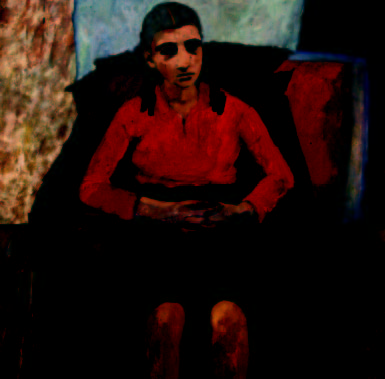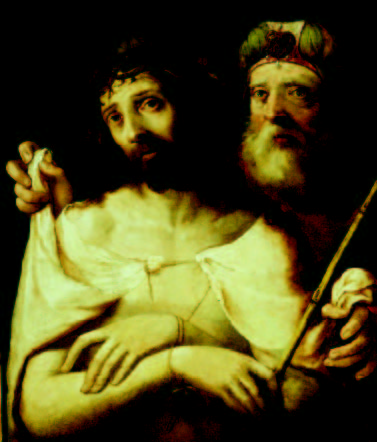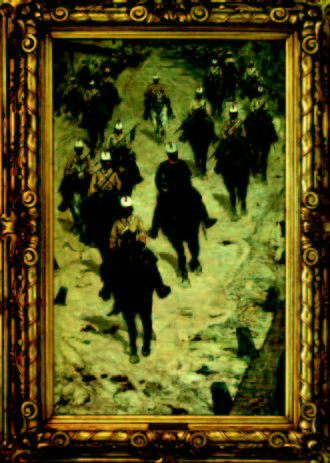

pinacoteca provinciale
Pierluca Cetera |
 |
La
Pinacoteca Provinciale di Bari, nata nel 1928, fornisce un’ampia
documentazione sulla scultura |
| The
Pinacoteca Provinciale di Bari (Provincial Picture-gallery of Bari),
was started in 1928, and provides a wide documentation of the regional sculpture and board painting in the Middle Ages, of Venetian painting of the 15th and 16th centuries (collected from churches in the region), of painting in Puglie during the 15th through 17th centuries and of Neapolitan painting of the 17th and 18th centuries (Finoglio, Stanzione, Giordano, Solimena, Bonito, Mondo). It also includes a precious set of paintings by C. Giaquinto, a large collection of paintings of the 19th and early 20th centuries; regional majolica of the 17th and 18th centuries, Neapolitan Nativities of the 18th century and historical clothing of the 18th and 19th centuries. Since 1987, the Picture-gallery has been enriched by the Grieco donation (50 paintings of the 19th and early 20th centuries including celebrities such as Lega, Boldini, Zandomeneghi, Fattori, De Pisis, Casorati, Campigli and Morandi). A hall was inaugurated in 2002 with 23 paintings of the 15th through 19th centuries, given in deposit by the Banco di Napoli. |
|
PINACOTECA
PROVINCIALE Via Spalato, 19 70121 Bari, Italy Tel. +39 080 5412421/2/3 |
 |
Felice
Casorati, Ragazza sulla poltrona, 1939 |
Fu pubblicato nel 1940 e datato 1939. La ragazza, nuda o vestita, seduta sulla poltrona, è uno dei temi principali dell’artista, documentabile sin dal 1919. Cambiando il colore del drappeggio, adagiato sulla poltrona verde, l’artista crea ogni volta nuovi accordi cromatici che nel nostro quadro sono estremamente meditati e calcolati, soprattutto in funzione della resa prospettica. La ragazza è raffigurata in tutta la sua malinconia e angolosità di adolescente, caratteristiche che trovano puntuale riscontro negli elementi rigorosi ed essenziali che formano lo spazio. Published in 1940 and dated 1939. A girl, either naked or dressed, sitting in an armchair is one of Casorati’s main themes, which can be documented back to 1919. By changing the colour of the drapery which leans on the green armchair, the artist creates every time new chromatic blends, which – in this painting – are extremely meditated and calculated, mainly with the aim of achieving a perspective result. The girl is portrayed in all the melancholy and peevishness of her adolescence, and these features are punctually matched by the rigorous, essential elements which form the space. Christine Farese Sperken |
| Pierluca
Cetera Nato a / Born in Castellaneta (TA), 1969 Vive tra / He lives between Trani e / and Castellaneta (TA) ceterumcenseo@libero.it |
Prima
fila, 2004 |
Qual
è la distanza ideale tra l’opera e il fruitore, quale il
rapporto tra artista, immagine rappresentata e soggetto che guarda? È
un problema intrigante su cui molti artisti si sono misurati (basti pensare
all’enigma concettuale del Giovane che guarda Lorenzo Lotto
di Paolini). Pierluca Cetera ci pone l’interrogativo con il suo
stile pittorico che mescola riferimenti alti e bassi, preziosità
tecniche e deformità corporali. Tre sedie dipinte in un ambiente
vuoto fronteggiano Ragazza sulla poltrona di Felice Casorati.
Sono la citazione delle tre sedie che Picasso pare mettesse di fronte
al cavalletto nel suo studio, a saggiare appunto la fatidica distanza.
Ai due lati, What is the ideal distance between the work and its enjoyer? What is the relationship between the artist, the image represented and the subject who looks at it? This intriguing issue has been the challenge of several artists; just think about the conceptual conundrum of the Giovane che guarda Lorenzo Lotto (Youth who looks at Lorenzo Lotto) by Paolini. Pierluca Cetera proposes us the question in his pictorial style, which blends high and low references, technical preciosities and physical deformities. Three chairs painted in an empty environment face Ragazza sulla poltrona (Girl in the armchair) by Felice Casorati. This is a quote for the three chairs we have been told Picasso used to put in front of the easel in his studio, quite to test the fateful distance. At the two sides, as in a sort of circular trend polyptych, the artist himself appears at the first row (Prima fila): first in the elegant appearance of a spectator, then gradually involved in a symbolic, ironic strip tease. Antonella Marino |
|
 |
Ignoto
veneto metà sec. XVI / anonymous Venetian
- mid-16th century, |
Il
dipinto riprende il tema del Cristo derisoriamente coronato di spine e
munito di uno scettro di canna, noto in ambito veneto (Antonello da Messina,
Mantegna, Andrea Solario), e particolarmente diffuso nella pittura e scultura
fiammingo-iberica anche attraverso la diffusione di stampe devozionali,
inserendovi la figura di Pilato che solleva i lembi del manto del Nazareno
per mostrarne il corpo.
The painting resumes the theme of Jesus
Christ mockingly crowned with spines and granted a cane sceptre. Such
theme was well known in a Venetian milieu (Antonello da Messina, Mantegna,
Andrea Solario), and particularly widespread in the Flemish/Spanish painting
and sculpture, also in devotional gravures which include the figure of
Pilato lifting the borders of the Nazarene’s cloak to show his body. Clara Gelao |
| Cristiano
De Gaetano Nato a / Born in Taranto, 1975 Vive e lavora a / He lives and works in Taranto criggy@libero.it |
Barabba,
2004 |
Il
tema del “doppio”, un topos classico dell’identità
e della sua difficile ricerca, percorre in modi multiformi la ricerca
di Cristiano De Gaetano.
The theme of the “double”, a classic
topos of identity and of the difficult search for it, encompasses in multiform
ways the artistic research of Cristiano De Gaetano. Antonella Marino |
|
 |
Giovanni
Fattori, Ritorno della cavalleria, 1888 |
Considerato
uno dei capolavori di Fattori, il dipinto fa parte dei soggetti militari,
argomento
Considered as one of Fattori’s masterpieces, the
painting belongs to the military subjects, i.e. to Christine Farese Sperken |
Michele
Giangrande Giuseppe
Teofilo |
Diamoci
un taglio, 2004 |
La
lama metallica di una forbice gigante fuoriesce dal pavimento, dividendo
idealmente in due
The metal blade of gigantic scissors materializes
from the floor and ideally divides in two parts a hall of the Picture-gallery,
where the outstanding painting by Giovanni Fattori stands out at the center.
On the background, a deafening music (the soundtrack of Jaws) threatingly
receives the spectator. A menace with a humorous setting: the scissors
seem to recall the large pop objects; they are almost a completion of
Needle, thread and knot in Oldenburg’s urban dimension. Antonella Marino |
|